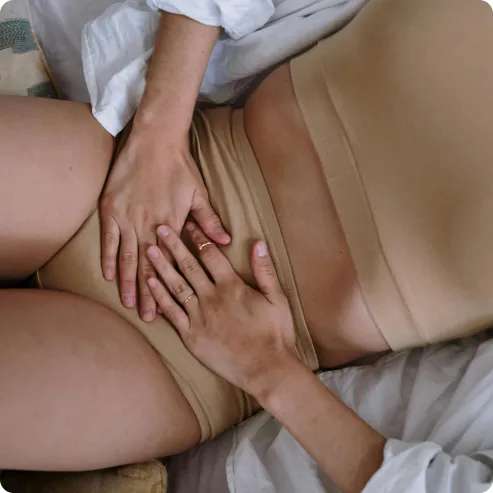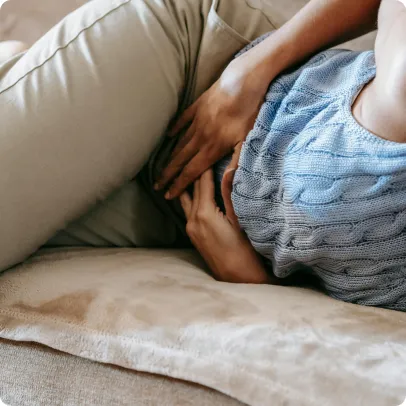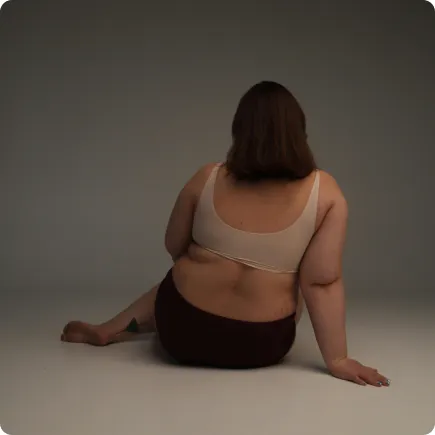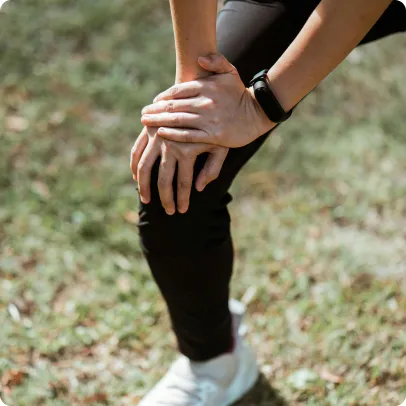
Menopause and Perimenopause Cramps

What are menopause and perimenopause cramps?
Many people entering late reproductive stage (LRS) assume that perimenopause marks the beginning of the end of uncomfortable period symptoms, including cramps. Yet for some, not only can cramping continue during perimenopause, but the pain associated with cramping can also become even more severe.
If you’re experiencing worsening cramps during perimenopause you’re not alone. Here are some of the factors that can contribute to your cramping, and tested strategies that may help to soothe your discomfort.
What causes perimenopause cramps?
Perimenopause, also known as the menopausal transition, refers to the time when your body makes its natural transition to menopause (which is defined as having gone 12 months with no menstrual period).
During perimenopause, you may begin to experience changes and symptoms—including hot flashes, night sweats, and vaginal dryness—which are rooted in hormonal alterations, especially changing estrogen levels.
Throughout the reproductive years, estrogen levels fall and rise relatively predictably during the menstrual cycle. But once you enter perimenopause, all of that changes.
Though some may have periods that end abruptly and others may experience irregular periods for years, the changes in hormone levels during perimenopause can cause new or worsening symptoms.
Because estrogen levels often rise during perimenopause, this can cause your uterus to release more prostaglandin, which can increase the likelihood and severity of your cramps (also known as dysmenorrhea).
Cramps may also be a sign of another condition, including:
- Endometriosis
- Adenomyosis
- Pelvic inflammatory disease
- Cervical stenosis
- Uterine fibroids
of Members report symptom improvement within 3 months.
care at your fingertips.

What are some medical-provider-prescribed treatments for perimenopause cramps?
If cramps interrupt your quality of life and cannot be managed with at-home treatments, reach out to your doctor. It’s possible that your cramps may be a sign of another condition, like uterine fibroids or pelvic inflammatory disease.
The hormonal changes that take place during perimenopause can be difficult, but working with a specialist menopause provider can help. At Evernow, we offer hormone therapy that can help you find relief safely and effectively, both for cramping and other bothersome symptoms of perimenopause.
- Hormone Replacement Therapy (HRT): Hormone therapy, such as estrogen and progesterone replacement, can help regulate the menstrual cycle and alleviate perimenopause-related cramps. HRT can also help with other perimenopausal symptoms like hot flashes and mood swings.
- Birth Control Pills: Low-dose birth control pills can help to regulate your menstrual cycle and reduce cramps. Birth control pills can also help with heavy bleeding and irregular periods.
- Intrauterine Device (IUD): Some women opt for an IUD with progestin, such as the levonorgestrel-releasing IUD, which can help reduce menstrual bleeding and cramping.
- Progestin Therapy: Progestin-only medications may be prescribed to women who cannot or should not take estrogen, helping to control heavy bleeding and cramping.
What are some non-medical treatments for perimenopause cramps you can do at home?
Thankfully, you don’t have to suffer through perimenopausal cramps. Research shows that there are several strategies that can help you find relief:
- Take a walk. Some people find that regular exercise, including walking and sex, can help to ease cramps.
- Apply heat. Soaking in a hot bath or using a hot water bottle or a heating pad on your lower abdomen may help to soothe your cramps.
- Try over-the-counter pain relievers. Ibuprofen and other non-steroidal anti-inflammatory drugs (NSAIDs) reduce the output of prostaglandins and have been shown to be especially effective in reducing pain and cramping. For optimal relief, take ibuprofen (or another pain reliever like acetaminophen if you cannot take NSAIDs) as soon as bleeding or cramping starts.
- Explore natural remedies. There are some alternative remedies aimed at relieving menstrual cramps. However, many of these remedies have not been studied enough for medical experts to recommend them. Some herbal products, for example, may help to relieve cramps. These herbs include pycnogenol and fennel.
- Look into MHT (if recommended). Talk to your doctor about whether menopausal hormone therapy (MHT) may help to reduce your cramps.
What should you do next?
Let’s get you prepared to be paired with your provider!
Select and submit all of the symptoms you are currently experiencing so your doctor can assess and provide a tailored treatment plan for you.
of Members report symptom improvement within 3 months.
care at your fingertips.

of Members report symptom improvement within 3 months.
care at your fingertips.

References
- Dysmenorrhea. (2020). https://my.clevelandclinic.org/health/diseases/4148-dysmenorrhea
- Dysmenorrhea. (2020). https://www.mayoclinic.org/diseases-conditions/menstrual-cramps/diagnosis-treatment/drc-20374944
- Menopause 101: A primer for the perimenopausal. (n.d.). https://www.menopause.org/for-women/menopauseflashes/menopause-symptoms-and-treatments/menopause-101-a-primer-for-the-perimenopausal
- Perimenopause. (n.d.). http://www.cemcor.ca/resources/life-phases/perimenopause
- Perimenopause. (2021). https://www.mayoclinic.org/diseases-conditions/perimenopause/symptoms-causes/syc-20354666
- Perimenopause: Rocky road to menopause. (2020). https://www.health.harvard.edu/womens-health/perimenopause-rocky-road-to-menopause
- Vitamin E and fish oil, separately or in combination, on treatment of primary dysmenorrhea: a double-blind, randomized clinical trial. (2018.) https://pubmed.ncbi.nlm.nih.gov/29542390/








